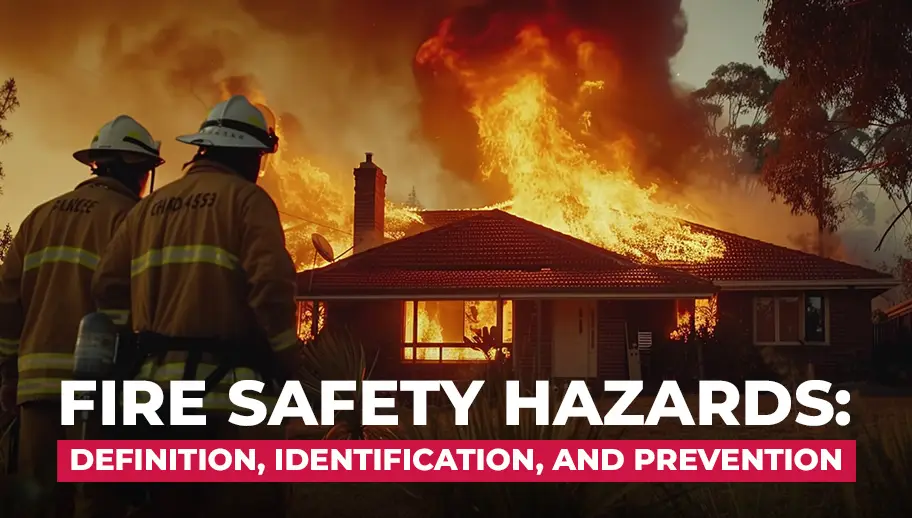Fire Safety Hazards: Definition, Identification, and Prevention


Fires can be devastating, causing damage to property and endangering lives. Fire safety hazards are conditions that increase the likelihood of a fire starting and spreading. These hazards can be found in various places, such as homes, workplaces, and public spaces.
Fire safety hazards are any situation that increases the likelihood of a fire erupting and spreading. These hazards may arise from various factors, such as:
Fire safety hazards can be found in buildings, outdoor areas, and vehicles. In outdoor areas, vegetation, debris, and other flammable materials can pose a risk of wildfire. Similarly, issues with the fuel system, engine overheating, or electrical faults can contribute to car fires.

Identifying fire safety hazards is essential in preventing fires. Some common signs of fire hazards include:
To avoid injury in a fire, it is essential to take preventative measures and know what to do in an emergency. Some steps to take to prevent injury include:
Fire can cause different types of injuries, including:
Burns are the most common fire injury that can range from minor to severe. Falls, explosions, or structural collapses can cause trauma. Smoke inhalation can cause respiratory problems and can be deadly.

First aid training is essential in case of a fire emergency. Australia Wide First Aid provides training in basic first aid, including:
In the case of a fire emergency, prompt and effective first aid can be crucial in preventing further injury or saving lives. In some cases, immediate first aid can prevent long-term damage or disability. This is why employees need to have proper training in first aid, especially when it comes to fire-related injuries. With first aid training from Australia Wide First Aid, employees can learn how to identify different types of burns, assess the severity of injuries, and provide appropriate treatment. They can also learn how to recognize the signs of smoke inhalation, which can be life-threatening if left untreated.
By having a trained and competent workforce, businesses can help to create a safer working environment and reduce the risk of injury or death from fire-related incidents., providing first aid training can also boost employee morale and help to create a culture of safety within the workplace.
Preventing fire safety hazards is crucial to avoid harm and damage to property. Regularly maintaining electrical equipment, appropriately storing flammable materials, and having a fire escape plan can all contribute to preventing fires and reducing the risk of injury. First aid training is also critical in case of a fire emergency. Remember, prevention is always better than cure.

October 1, 2024
Almost every job involves using the body to carry out some type of manual task. Some tasks may be hazardous, causing injuries such as musculoskeletal disorders (MSDs). Knowing how to manage them is a legal responsibility of all workplaces.

January 10, 2024
In Australia, workplace safety is a top priority, and First Aid plays a crucial role in ensuring the well-being of employees. Workplaces are expected to adhere to specific regulations and guidelines outlined by Safe Work Australia. How does your workplace stack up?

November 24, 2023
No matter how experienced you are as an outdoor activity leader, there are some things you should always do to keep your group safe. Nature can be unpredictable, and so it’s best to be prepared.